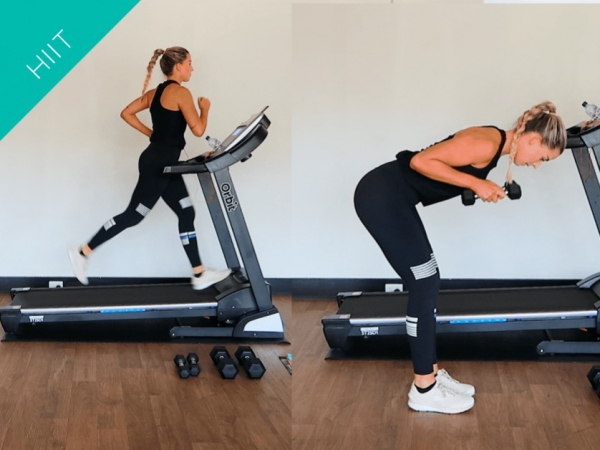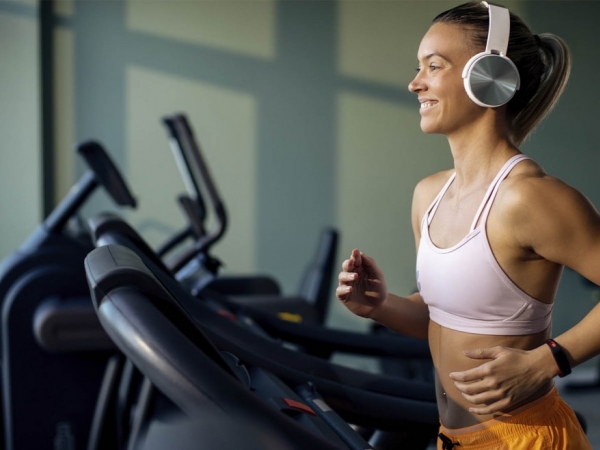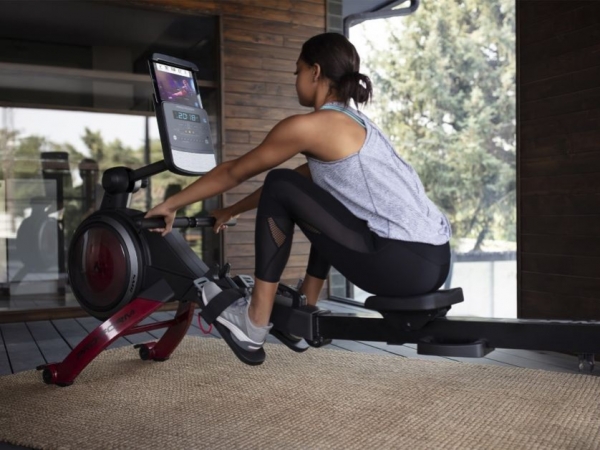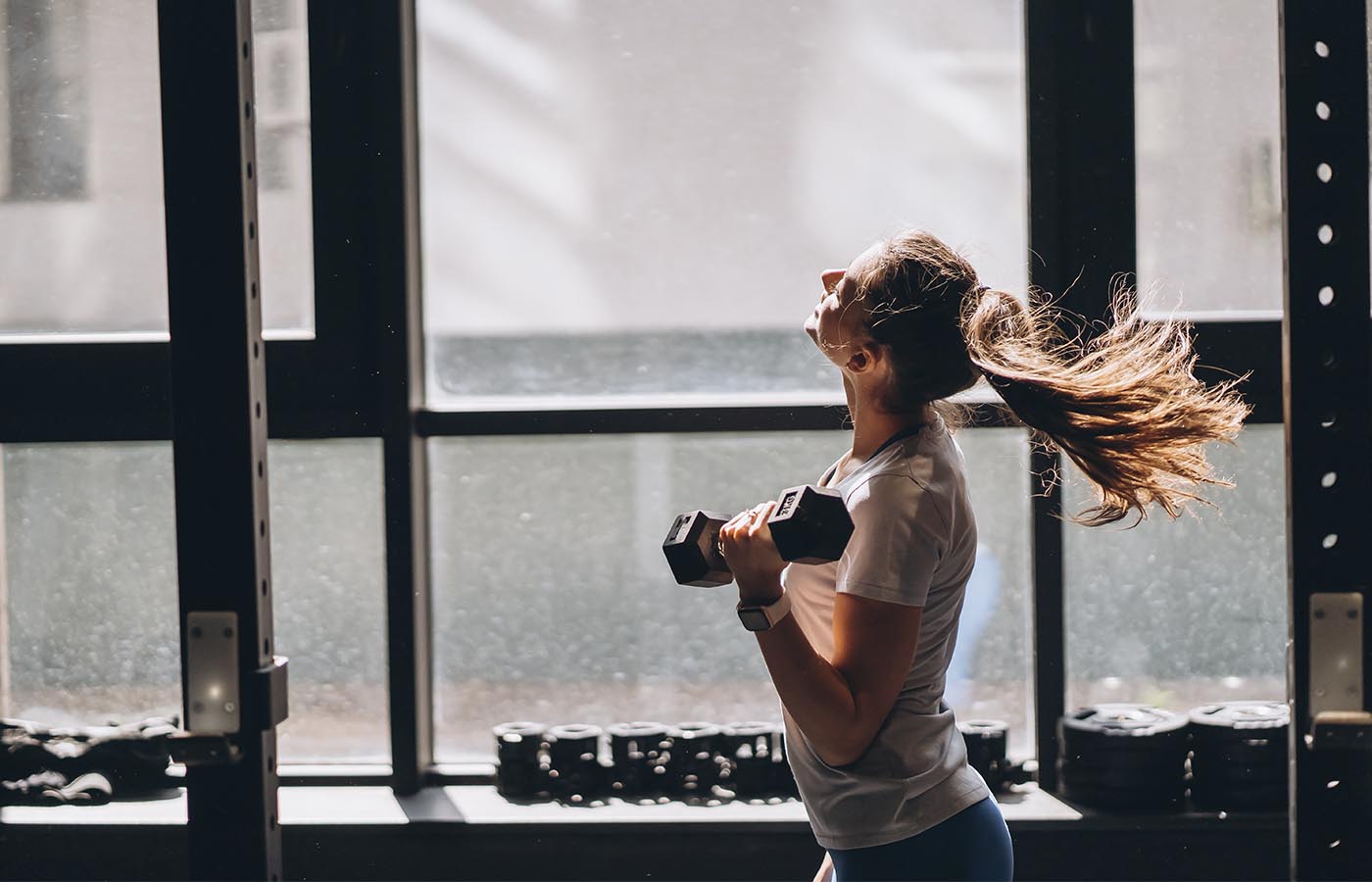
Finding the motivation to exercise in the summer heat can be tough. This is where indoor exercises you can do in the privacy of your own home are so good.
Let's look at a mix of equipment-based and bodyweight indoor exercises to help you maintain your fitness goals when it’s a stinker outside.
Equipment-based indoor exercises
There's nothing better than working out in your own personal space at home with some indoor exercise equipment.
1. Free weights
For building muscle and strength with equipment, free weights are the cheapest way to work out. To work out effectively, you can get started with some dumbbells, a barbell, and some weight plates.
When you're ready to take things up a notch, buying your own bench is a great way to improve your workouts. You can tailor your routines and target specific muscle groups. For even more flexibility, kettlebells can be added to the mix. When choosing equipment, it’s important to consider the size of your space, and remember, always stay close to your air conditioner or fan.
There are lots of great exercises to get you started, from simple curls to step-ups, presses, and lunges. Bent-over rows are also effective, and they target one of the most neglected muscle groups in your entire body - your back.
Here’s how to perform a bent-over barbell row:
- Grab a weighted barbell using an overhand grip and your arms extended.
- Bend your knees and stand up straight with your legs shoulder width apart.
- Now bend your torso slightly forward, keeping your back straight and your head looking straight ahead
- While breathing out, slowly bring the barbell up to your belly button, keeping your back straights and squeezing your shoulder blades at the top of the movement (don’t drop your head)
- Now breathing out, slowly lower the barbell back down to your kees, keeping your back straight and your head looking straight ahead
- Repeat for your desired number of repetitions.
If you’re new to training with free weights, see Beginner’s Guide to Strength Training with Free Weights.
2. Exercise bikes
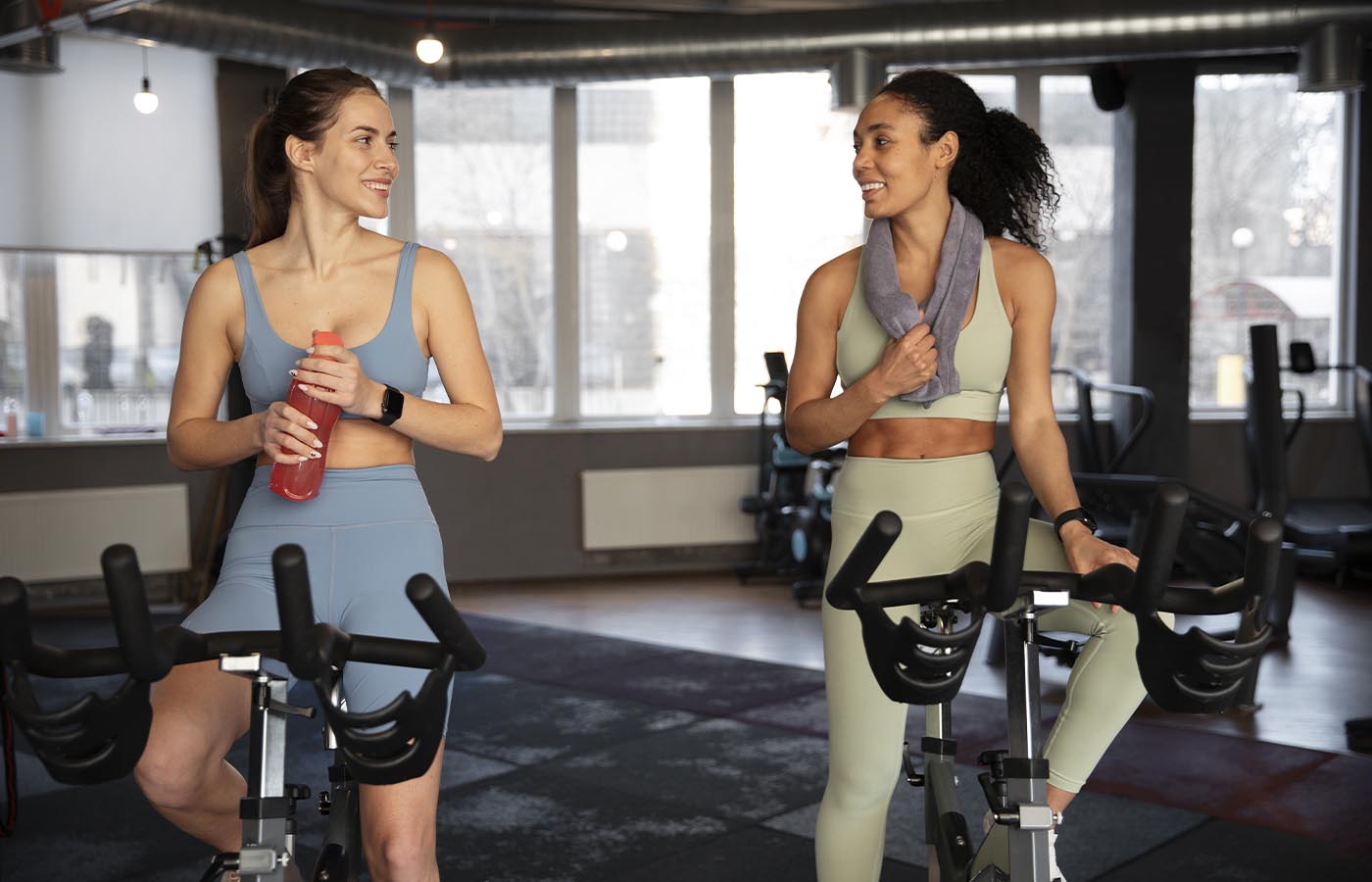
When it's too hot to hit the streets in Lycra, a stationary bike is a great alternative. While they're often associated with workout VCRs and neon leotards, exercise bikes have come a long way since the 1980s. Modern products are more streamlined, they feature more technology, and they're much easier to customise to ensure the perfect workout. From motivational screens to magnetic technology, exercise bikes are more effective and fun than ever before.
When choosing a product, it's important to understand key differences between bikes. While all exercise bikes help to improve cardiovascular fitness and build muscle, they offer slightly different benefits. Spin bikes allow standing by mimicking the natural posture of a road bike, upright bikes are more stationary with higher handlebars, recumbent bikes provide extra support for rehabilitation, and air bikes add upper body resistance.
Note: If you haven’t come across an air bike before, see our guide to Air Bikes vs Spin Bikes for Weight Loss.
Working out on an exercise bike is fairly straightforward, but simple adjustments can make a big difference to the end results. For example, you can change resistance levels, your riding cadence, and your body position.
If you're looking for maximum results in a short time frame, the following exercise bike routine is a great place to start.
- Warm up with a fairly easy 5-minute ride.
- Increase the resistance so sprinting is challenging but still comfortable.
- Sprint at a hard pace for 30 seconds.
- Sprint at a medium pace for 30 seconds.
- Sprint at an easy pace for 60 seconds.
- Repeat 3 times and finish with a 5-minute cooldown.
Here's Personal Trainer, Gerard Majda with a 10 minute spin bike workout:
3. Indoor rowing
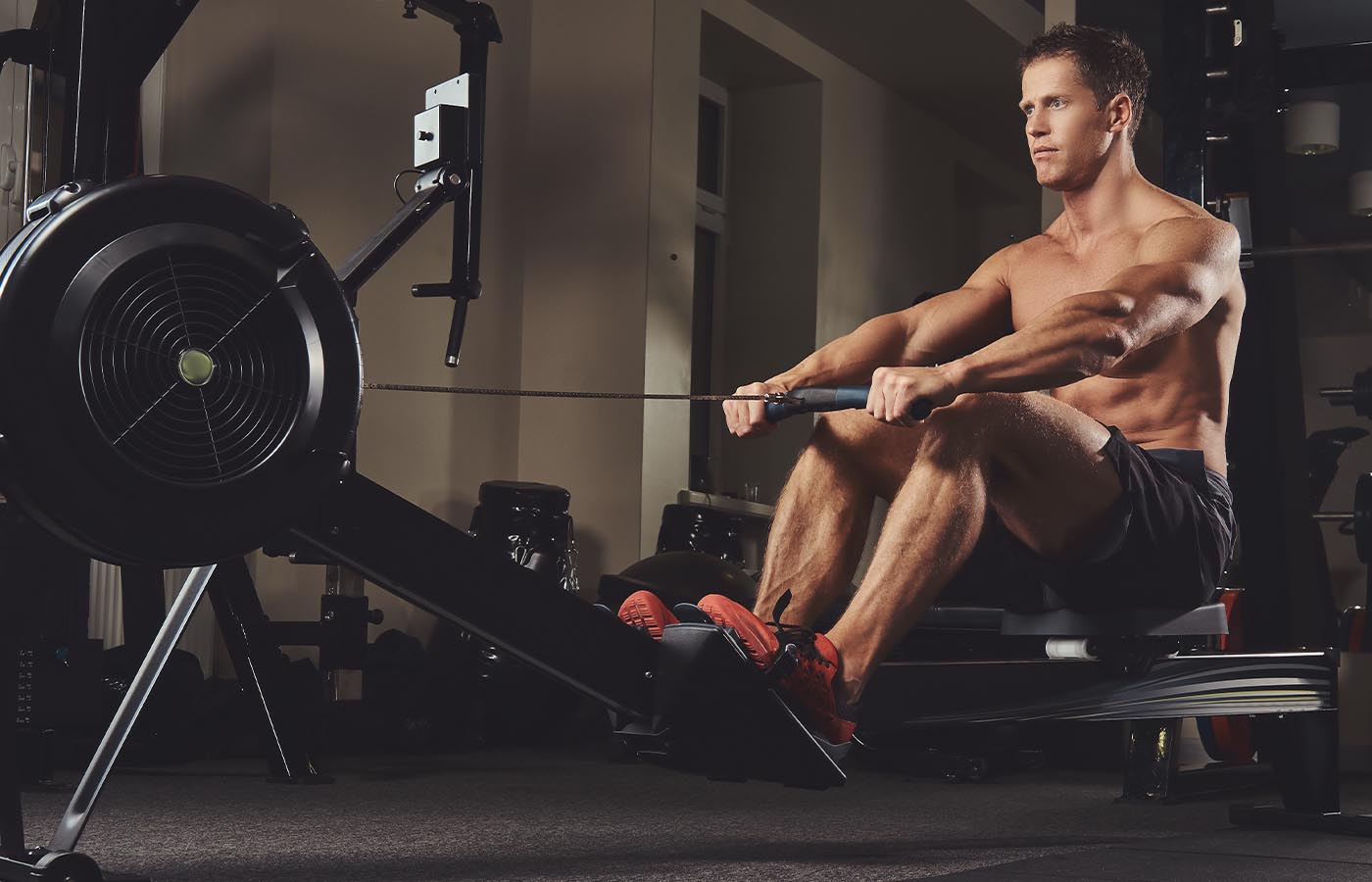
If you're looking for an alternative to an indoor bike, a rowing machine may be the perfect fit. These machines are modern, stylish, and lots of fun, and they're great for building aerobic fitness and muscular power at the same time. Indoor rowing helps to build both upper and lower body strength. They're also low-impact, which makes them great for beginners or rehabilitation.
There are three main categories of indoor rowing machines: air rowers, water rowers, and magnetic rowers. While they offer similar benefits, they use different technology to generate resistance and inspire power. Water rowers use fluid to resemble a real rowing experience, air rowers get resistance from a spinning flywheel, and magnetic rowing machines allow you to select resistance levels from an interface.
Whether you're a total beginner or a seasoned pro, all machines allow you to train with different intervals and intensities. The following rowing exercise involves longer durations and maximum stroke rate variation.
- Start to row at a fairly fast but comfortable pace.
- Row at 20 spm (strokes per minute) for 2 minutes.
- Move up to 22 spm for the next 2 minutes.
- Move up again to 24 spm for the last minute.
- Row very slowly for 2 more minutes.
- Get your breath back and repeat the exercise.
4. Functional training
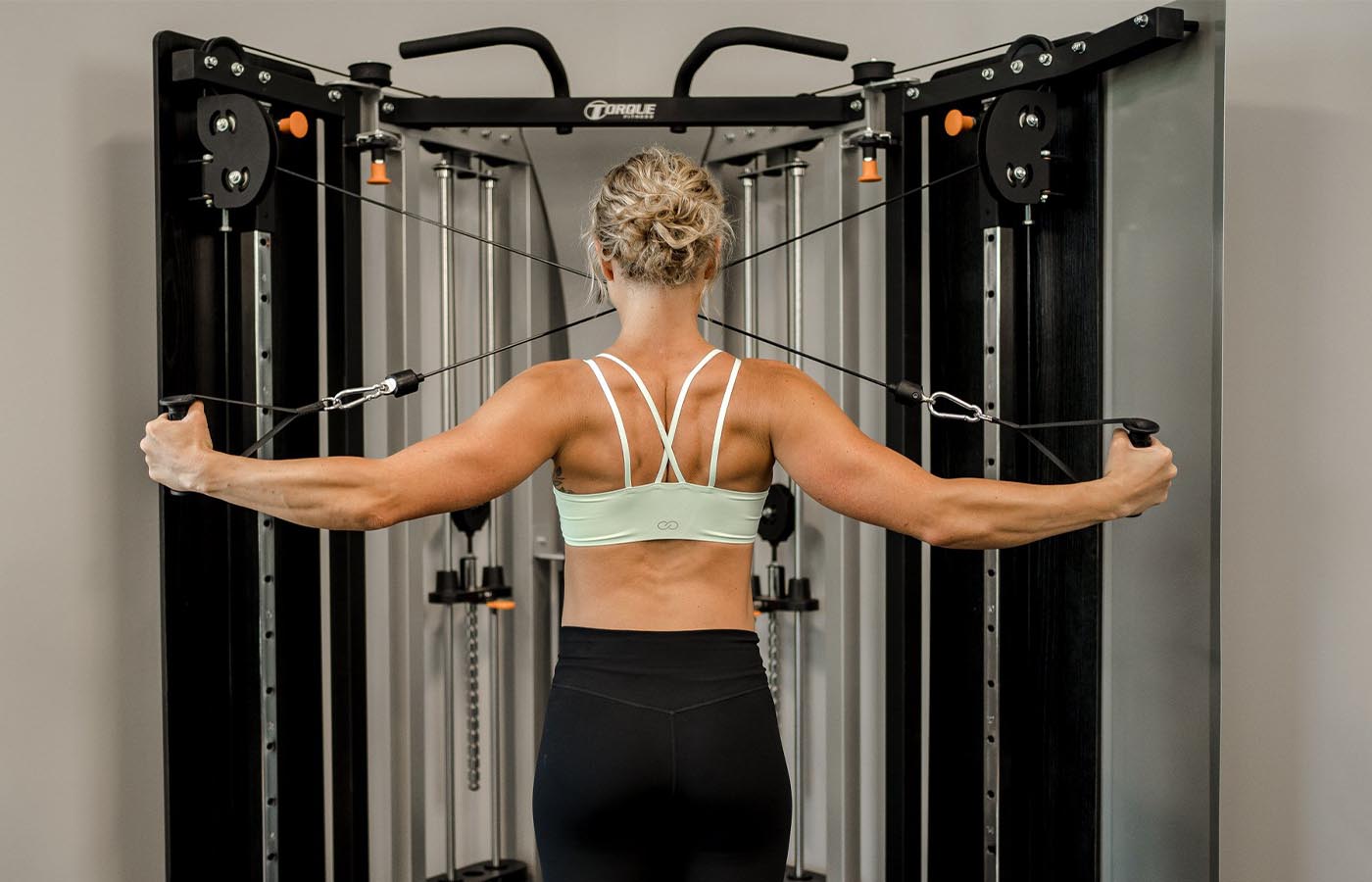
Functional exercise machines offer functional training from the comfort of your own home. This type of training focuses on everyday movements, with cables and pulleys engaged to move your body in every direction. Instead of focusing on arbitrary muscle groups, often in isolation, functional routines help to boost fitness by recreating everyday motions.
Functional trainers are getting more popular all the time, as they provide fantastic benefits while enabling rehabilitation and reducing injury risks. Our functional training machines are very popular with athletes, who can build strength and mimic the well-rounded movements of their sporting life. During summer, these machines offer complete freedom of movement in a climate-controlled environment.
Working out on a cable machine involves lots of options, so it's important to plan ahead to avoid stressing the same muscles. The resistance of the cables and pulleys allows you to perform numerous exercises in a variety of directions, from lateral rises to bicep curls and pull-downs.
The following cable shoulder press routine is a great way to work out your upper body.
- Set the cables so they are inline with your hips.
- Squat down and grab the handles with both hands.
- Stand up with your elbows bent, until the handles are slightly higher than shoulder level.
- Step back with one foot for maximum stability.
- Engage your core and push the cables upward until your arms are extended over your head.
- Do the move in reverse until the handles are even with your shoulders.
Bodyweight indoor exercises
Bodyweight routines help to build strength, tone shape, and burn fat through simple resistance alone. While some supportive equipment is allowed, a bodyweight workout is essentially about using the strength of your body alone.
5. Pull-ups and chin-ups
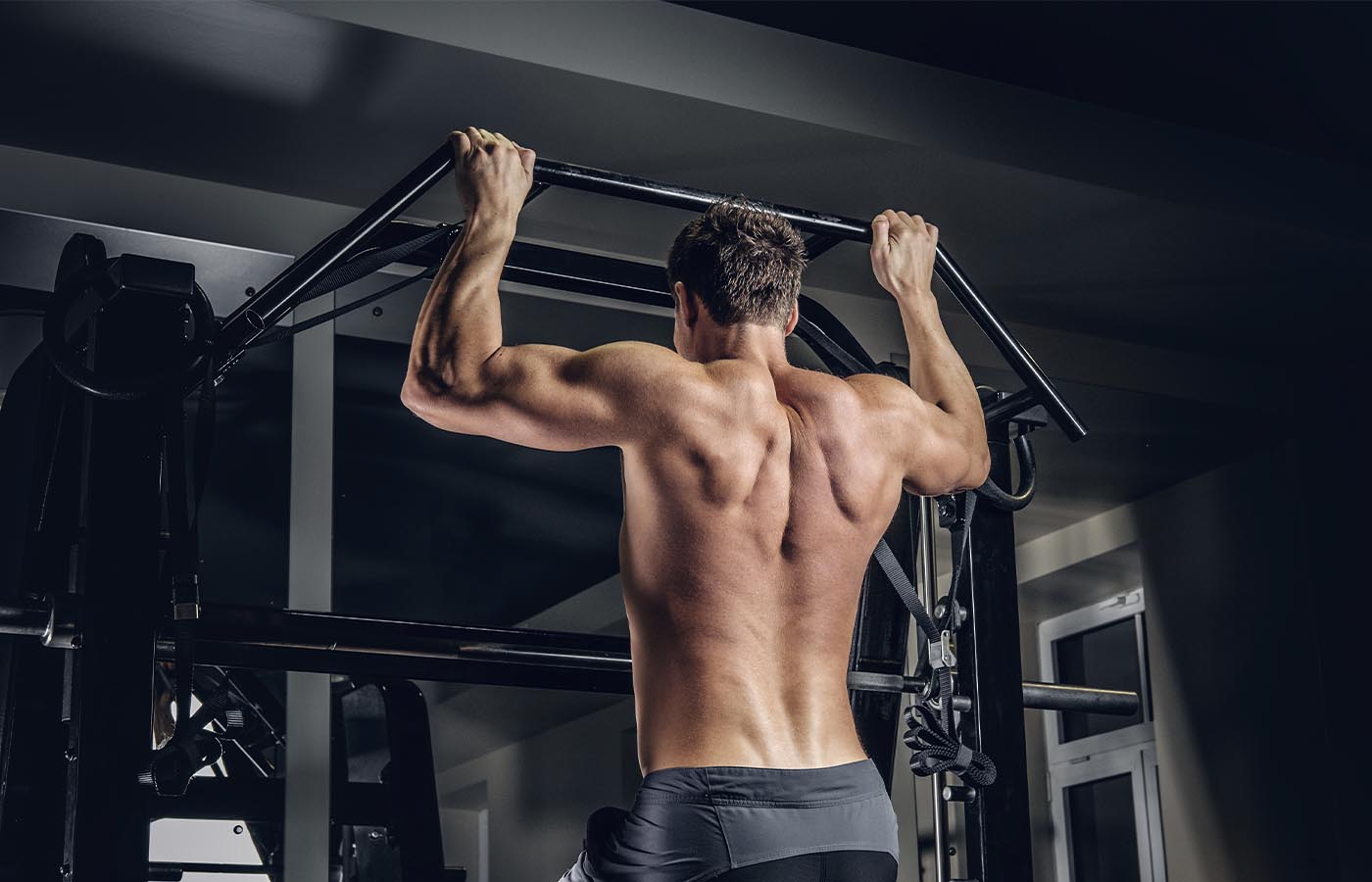
One of the most effective ways to boost strength is to fight gravity and lift your own body from the ground. There are two primary ways to do this: pull-ups emphasise the back and shoulders, and chin-ups are all about the arms and chest. While both exercises are similar, chin-ups work your biceps and pecs slightly more than your lats and traps. Dedicated bars are available to make these exercises possible at home.
See this Doorway Pull Up Bar or this model with more hand positions to help target a wider range of movement and muscles.
The perfect pull-up exercise is all about balancing form with function.
- Get your body ready, grab the bar, and focus your mind.
- Pull yourself up to the bar while exhaling, until your chin is level with the bar.
- Pause at the top for just a moment.
- Lower your body while inhaling, until your elbows are straight.
- Repeat this movement, without touching the floor if possible.
- Start with just a couple of repetitions, and build up from there.
6. Push-up variations
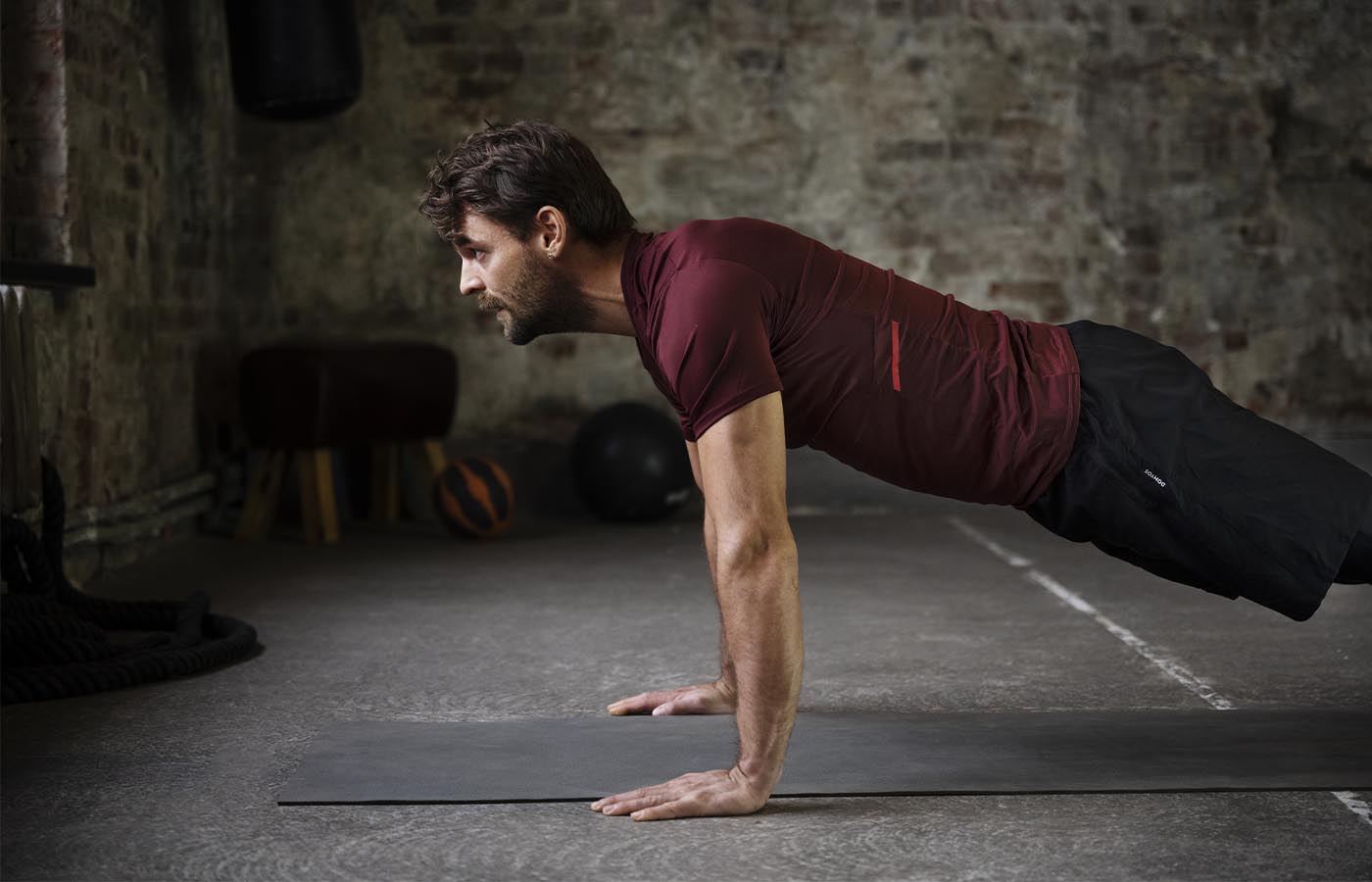
Traditional push-ups are still going strong, with this simple movement repeated time and time again to build and tone muscles. Modern fitness experts have developed a number of variations, however, from traditional military-style push-ups to triangles, pikes, sphinx, and Spiderman push-ups.
While there is no "best" version, some push-up styles are designed to engage specific muscle groups. Push-ups are the perfect summer exercise because you can do them anytime in the coolness of your own living space.
Also known as diamond push-ups, triangle push-ups are a great way to work your triceps at home.
- Start on all fours in a plank-like position.
- Keep with your knees flexed and body straight.
- Move your hands together and spread your fingers into a diamond shape.
- Lower your body until your chest almost touches the floor.
- Pause for a moment, before pushing back up and extending.
- Repeat and refine, but be careful to avoid injury.
Take your push ups to the next level with the Harbinger Push Up Elite training aid.
7. Squats and lunges
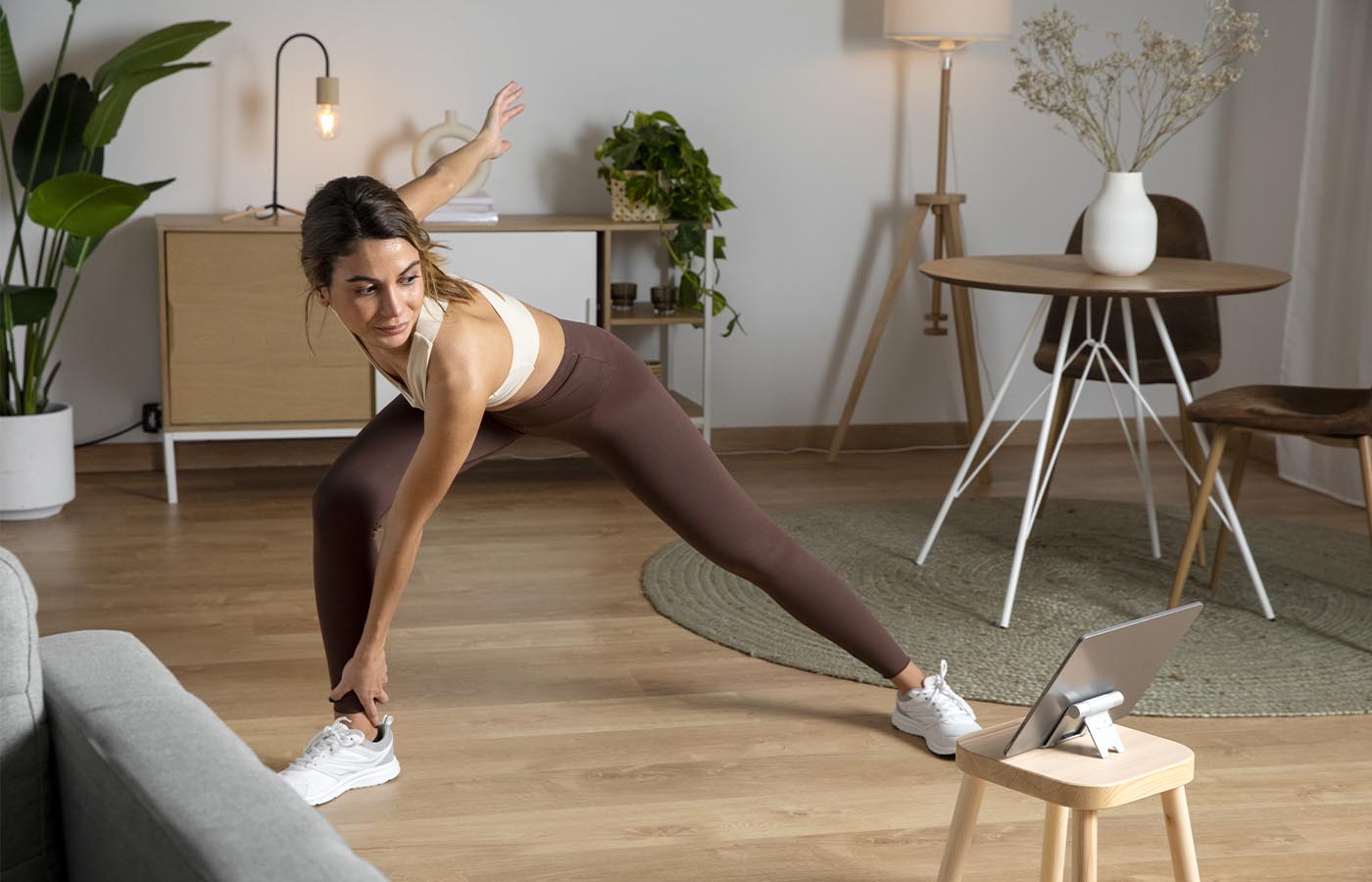
Squats and lunges are related functional exercises that work muscles in your lower body. With squats, you place your legs side by side with your knees bent and feet on the ground. Squats are ideal for beginners, and they're a great way to burn calories and lose weight. Squats help to strengthen leg muscles, tendons, and ligaments, and they're particularly effective during summer when training the body for winter sport.
Lunges are similar, only this time you put one leg forward with your knee bent while the other leg is behind. While squats are more balanced and easier to perform, lunges can be a great way to activate specific muscles and work your balance at the same time. Both squats and lunges are easy to perform at home, especially when you find a nice cool area under your air conditioner or next to your favourite fan.
Lunges are easy as long as you follow these simple instructions and avoid over-stress. This leads to injury and if you’re injured, you can’t train.
- Stand with your feet apart, your back straight, and your shoulders back.
- Keep your abs tight and brace your core.
- Take a step forward with one leg and slowly bend both knees.
- Keep your back knee just above the floor.
- Stand back up and repeat the movement.
- Remember to alternate legs until your set is complete.
If you want to keep up your fitness levels during summer, it's important to play smart and focus on indoor exercise. While it's always great to get outside and explore the big wide world, working out indoors from the comfort of home is the perfect way to beat the heat and stay focused on your fitness goals.
Why not contact our team via email, live chat or call 1300 13 42 13 for more advice on the best indoor exercises for warmer weather.

